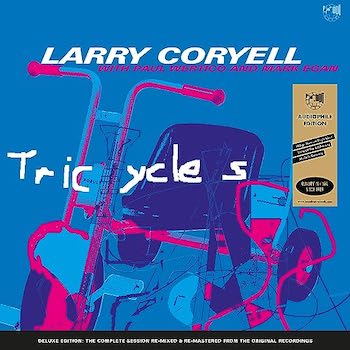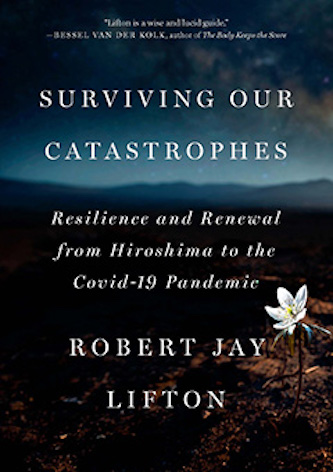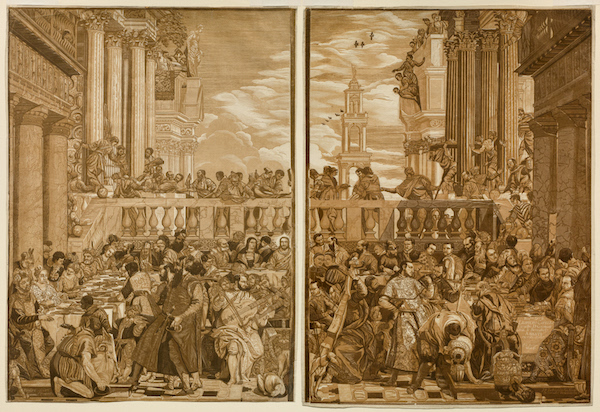September Short Fuses — Materia Critica
Each month, our arts critics — music, book, theater, dance, television, film, and visual arts — fire off a few brief reviews.
Classical Music
All in all, a wonderful voyage of discovery, with a splendid tour guide.
 Kenneth Hamilton is that rare bird: a first-rate performer who also writes well-informed and beautifully phrased books and essays. I welcomed here a Chopin two-CD set by him, a Liszt two-CD set, and Romantic Piano Encores; all three were characterized by a fresh mix of familiar and unfamiliar works and by a keen awareness of how the pianists of the Golden Age built to climaxes or allowed a phrase to relax tenderly to the cadence. There is never a hint of pedanticism in Hamilton’s playing, and the piano (modern, not “period”) is well maintained and recorded at the perfect distance and with just the right amount of room resonance.
Kenneth Hamilton is that rare bird: a first-rate performer who also writes well-informed and beautifully phrased books and essays. I welcomed here a Chopin two-CD set by him, a Liszt two-CD set, and Romantic Piano Encores; all three were characterized by a fresh mix of familiar and unfamiliar works and by a keen awareness of how the pianists of the Golden Age built to climaxes or allowed a phrase to relax tenderly to the cadence. There is never a hint of pedanticism in Hamilton’s playing, and the piano (modern, not “period”) is well maintained and recorded at the perfect distance and with just the right amount of room resonance.
Here now is Kenneth Hamilton plays Liszt, Volume 2: Salon and Stage (Prima Facie PFCD 210), and it is a glorious triumph. All of these pieces are arrangements of, or to some extent fantasies on, songs (some by Liszt himself) and operas. The result is an engaging reminder of the wealth of creativity in 19th-century music, and of Liszt’s own remarkable ability to evoke musical moods and to embroider them without somehow cheapening them.
We hear one of Liszt’s most famous pieces, “Liebestraum,” no. 3, but also nos. 1 and 2. (The song versions used poems by Ludwig Uhland and Ferdinand Freiligrath.) Among other widely loved pieces heard here in fresh guise are the Waltz from Gounod’s Faust, the Polonaise from Tchaikovsky’s Eugene Onegin, Mendelssohn’s song “On Wings of Song,” some Schubert dances (reworked under the title Soirées de Vienne), the “Song to the Evening Star” from Wagner’s Tannhäuser, and excerpts from Verdi’s Rigoletto. These and yet others gain new luster through Liszt’s embroideries and inventive figurations. (For a full list of pieces, with links so you can listen or purchase, click here.)
Verdi’s Aida is almost recomposed, in a way: Liszt ends his arrangement of three numbers from it by bringing back the doomed lovers’ “O terra addio!” one more time, in ethereal manner, allowing us to imagine the pair wafting their way to Heaven.
Other pieces heard here are based on works that are likely to be less familiar (especially to people who tend to be focused mainly on piano music), such as Meyerbeer’s L’Africaine, Verdi’s Ernani, songs by Clara Schumann and Eduard Lassen, and, in one touching excerpt, the Saint Cecilia Mass by Gounod. In each of these, Liszt achieves a remarkable blending of personalities: that of the original composer and that of Liszt himself, as a knowing expositor and commentator.
Hamilton’s booklet-essay is richly informative, explaining how he has incorporated various alternative passages that Liszt added, sometimes for himself or for another pianist. All in all, a wonderful voyage of discovery, with a splendid tour guide.
— Ralph P. Locke
Isata Kanneh-Mason’s facility is sublime: hardly a rhythmic figuration is unclear or a texture out of balance. The program, too, four pieces reminiscent — by title or theme — of childhood, offers a good bit of variety; not everything is sunshine and light.

There’s much to admire in Childhood Tales (Decca), pianist Isata Kanneh-Mason’s third album for Decca. To start, her facility is sublime: hardly a rhythmic figuration is unclear or a texture out of balance. The program, too — four pieces reminiscent, by title or theme, of childhood — offers a good bit of variety; not everything is sunshine and light.
That last point is most true in Robert Schumann’s Kinderszenen, which, on the surface, suggests innocence and charm, but beneath veers into some shadowy corners. Kanneh-Mason’s performance is lean and sometimes quite muscular (“Wichtige begebenheit” drives nicely), but also a touch literal (“Träumerei”) and wanting for color (“Glückes genug”).
Similar issues sometimes emerge in her take on Debussy’s Children’s Corner: “Jimbo’s Lullaby,” for instance, feels rigid and might benefit from a greater sense of atmosphere and broader tempos. But the overall performance is shapely, secure, and well directed (the “Cakewalk” is a romp).
The same holds true for Mozart’s whimsical 12 Variations on “Ah, vous dirai-je Maman” (aka “Twinkle, Twinkle Little Star”). Approaching the music with plenty of boldness — Kanneh-Mason delivers no shortage of big, explosive moments, à la Beethoven — this is fresh, invigorating, grab-you-by-the-lapels Mozart.
But the pianist saves her best for Ernst von Dohnányi’s Variations on a Nursery Song. Utilizing the same tune as Mozart did, the Hungarian master wove an altogether more complicated tapestry with the melody, often puckish and cheeky, yes — but sometimes menacing and eerie.
Kanneh-Mason, here joined by the Royal Liverpool Philharmonic Orchestra and Domingo Hindoyan, makes deft work of it, playing with vigor, fluency, and style. The waltz variation is particularly schwungvoll and characterful, the Passacaglia beautifully focused, and the concluding fugue an idealized vision of what childhood should be: lots of fun.
— Jonathan Blumhofer
Conductor Semyon Bychkov’s attention to all the little things — color, timbral blend, dynamic balances, articulations — is second-to-none.
 As a follow-up to their excellent recording of Gustav Mahler’s Second Symphony this spring, Semyon Bychkov and the Czech Philharmonic Orchestra have taken a step back in time, to that composer’s Symphony No. 1. Even so, their interpretation of the piece (on Pentatone) shares more than a little in common with the prior release.
As a follow-up to their excellent recording of Gustav Mahler’s Second Symphony this spring, Semyon Bychkov and the Czech Philharmonic Orchestra have taken a step back in time, to that composer’s Symphony No. 1. Even so, their interpretation of the piece (on Pentatone) shares more than a little in common with the prior release.
Bychkov’s attention to all the little things — color, timbral blend, dynamic balances, articulations — is second-to-none. The result is that one hears in lucid detail just what Mahler wrote. This pays dividends in the outer movements, especially: the introduction to the first is warm and luminous, while the finale’s stormy opening is marked by an uncommon level of clarity.
None of this comes at the expense of character or dynamic heft (to be sure, the last movement thunders). Rather, Bychkov and the Philharmonic seem to have the measure of the music’s expressive content well in hand. Everything flows naturally. The counterpoint dances throughout. The sheer weirdness of the third movement comes out with an astonishing blend of precision and menace.
One little thing: Bychkov doesn’t abide any shenanigans with the tempo in the finale’s coda (where Mahler wrote nothing, but many conductors like to speed up or slow down, sometimes egregiously). No, he trusts the music fully and, boy, does that approach pay off. Indeed, this whole interpretation — and the pairing’s larger Mahler cycle — demonstrates an embrace of the letter of the score which leads to a performance uncovering the music’s spirit in the process.
That’s an approach to Mahler that many noted conductors (say, Pierre Boulez) haven’t reliably managed. More power to Bychkov and the Philharmonic, then, for accomplishing the feat and transforming something that might have been redundant (yet another traversal of these symphonies) into a necessary undertaking.
— Jonathan Blumhofer
Popular Music
“Panico No Submundo” welcomes listeners to a party where ecstasy and dread are indistinguishable.

Cover art for Panico No Submundo.
Picture a jammed street party in São Paulo where It’s Pennywise is dancing on top of the speakers in full makeup and costume, setting off sparklers. A plangent mix of perfume and chemicals may be helping to sustain the festivities, but this is no hallucination. It’s an example of baile funk, which bears no resemblance to the American variety. Initially inspired by Miami bass and freestyle, this eclectic form has been developing on its own for several decades (although M.I.A. and even Travis Scott have dabbled in it). Hip-hop and horror genre influences are cross-pollinated with Afro-Brazilian rhythms, while the costumes associated with its often wild parties date back to medieval revelry in Portugal.
São Paulo producer DJ K leads the Bruxaria (witchcraft) Squad on his debut album Panico No Submundo (Panic in the Underworld), which has been released as part of the Ugandan label Nyege Nyege Tapes’ series of adventurous electronic music from Africa and its diasporas. The recording features a large cast of rappers, although their voices are usually submerged beneath DJ K’s beats.
Panico No Submundo doesn’t come out of nowhere, but sounds like the future, music that embraces a particularly lo-fi, menacing touch.
DJ K loves extremes: harsh sirens and deep kick drums. There are few attempts at moderation. (The trebly synthesizers are intended to enhance the perfume-induced high.) He jams together samples, vocals, and drum programming without any interest in making them fit the same key or stick to a consistent rhythm. Baile funk producers frequently hit the drum on every beat — avoiding the syncopation that defined American funk — and use shouted vocals rhythmically. DJ K’s no-holds-barred version of the style is, at least on the surface, raw and chaotic. Yet there is considerable attention to structure. He knows just how long to push noise without reaching the listener’s breaking point. (The album’s level of craft is far more evident heard through quality speakers.) His sound design knits together the cavernous spaces of dub reggae with the minimalist electronics of John Carpenter’s score for Halloween.
Panico No Submundo’s cover shows purple-tinted clowns chasing US hundred-dollar bills. Horror movie and occult references run through DJ K’s music, but the monsters are not just about cosplay. Like the Gravediggaz or early Three Six Mafia, DJ K uses the grotesque as metaphors to suggest real life experiences of poverty and violence. (Note: song titles and lyrics that repeatedly use “puta,” a slur that that means “bitch” and “whore” are less justifiable.) The music here is both celebratory and nightmarish — a particularly malevolent synthesizer snakes its way through “Erva Venevosa.” Because of that, the record’s few moments of relative silence and prettiness, such as the isolated, echo-chamber vocals of “Automotivo Accorduo de Favela Toda” and the flute looped through “Flauta de Novo Mundo,” stand out with considerable power. Fried synthesizer riffs, like a tuned doorbell reduced to a few notes and blown out through distortion, dominate several songs. These blaring noises welcome listeners to a party where ecstasy and dread are indistinguishable.
— Steve Erickson
Architecture
A campaign to save Marcel Breuer’s summer home on the Outer Cape, its historic contents, and stopping its likely demolition.

Marcel Breuer’s summer home in Wellfleet, MA. Photo: CCMHT
A critical link to the history of the Bauhaus diaspora sits on the Outer Cape — the family vacation home of modernist master architect (Whitney Museum) and furniture designer (Wassily Chair, etc.) Marcel Breuer. The house is perched on stilts set deep in the woods of Wellfleet, Massachusetts, and it features a cantilevered porch, where family and friends would spend much of their holiday time.
Now owned by his 80-year-old son Tamás Breuer, this four-bedroom structure built in 1949 is the most architecturally significant modernist structure on Cape Cod. One of the first of Marcel Breuer’s “Long House” designs, the structure also houses art by noteworthy Bauhaus friends and colleagues (including Josef Albers, Alexander Calder, and Paul Klee), a remarkable book collection, an extensive photo documentation archive, and several of Breuer’s original pieces of furniture.
It may be something of an architectural treasure trove, but over the decades, due to weather, wear and tear, indifference, or limited finances, the building has deteriorated — there is significant rot on the porch railings, wood cladding. Areas of the roof are sending leaks down to the living room’s ceiling. An overgrown forest surrounds the home, which will necessitate removing dead plant growth and trimming back trees that could damage the façade and roof. The site needs to be made more accessible as well: the driveway needs to be leveled and the rutted dirt road that approaches the home needs to be smoothed out.
Tamás has wanted to sell the property for a while and there is a gallant savior in the wings. It is the admirable Cape Cod Modern House Trust (CCMHT), which was founded in 2007 to collect, archive, and share documentation of the outer Cape’s exceptional modern architecture, prevent demolition of and restore endangered modern houses, and to relaunch them as platforms for new creative work. Now under contract to buy the house in the spring of 2024, CCMHT has less than a year to raise the funds needed to save it. After the sale, CCMHT will restore the property and open it to the public as a workshop and for public viewing. Inspired by Bauhaus ideals as well as by the ideas of Henry David Thoreau, CCMHT intends to leave the 4.2 acres of surrounding landscape wild.
Breuer was deeply attached to his Wellfleet home and property After his death in 1981, Breuer asked that his ashes be scattered among the nearby pine trees. Hopefully, nourished by the generosity of an engaged community, the Breuer Cape House will be maintained for future generations. Donations can be sent to the Cape Cod Modern House Trust, PO Box 1191, South Wellfleet, MA 02663. Email: capemoderntrust@gmail.com
— Mark Favermann
Jazz
Larry Coryell attributes the elegant flexibility and daringness of the interactions of the trio to their familiarity with not only the pieces played on the album, but with each other.
 In 1967, having already recorded with Chico Hamilton, Chico O’Farrill, and Bob Moses, guitarist Larry Coryell made Duster with an all-star group led by vibraphone player Gary Burton. The all-star session also featured bassist Steve Swallow and drummer Roy Haynes. It’s still my favorite Burton disc. Yet, despite its uniquely lyrical compositions, such as “General Mojo’s Well Laid Plan,” “Sing Me Softly of the Blues,” and “Sweet Rain,” a mild controversy sprung up around Duster. Inexplicably to me, it’s been called the first jazz-rock record. In the mid-’70s, Coryell gratified those looking for rock influences with his band Eleventh House. (He even supplied a tune called “Rock ‘n’ Roll Lovers.”) He was intermittently immersed in what everyone would call jazz: for example, he appeared on Charles Mingus’s Me, Myself and I. In the late ’70s he made a series of acoustic guitar records, including the solo Standing Ovation and European Impressions with tributes to Ralph Vaughan Williams, Mozart, and Ravel. It’s not that he hadn’t made up his mind what genre of music he would play: he felt he didn’t need to.
In 1967, having already recorded with Chico Hamilton, Chico O’Farrill, and Bob Moses, guitarist Larry Coryell made Duster with an all-star group led by vibraphone player Gary Burton. The all-star session also featured bassist Steve Swallow and drummer Roy Haynes. It’s still my favorite Burton disc. Yet, despite its uniquely lyrical compositions, such as “General Mojo’s Well Laid Plan,” “Sing Me Softly of the Blues,” and “Sweet Rain,” a mild controversy sprung up around Duster. Inexplicably to me, it’s been called the first jazz-rock record. In the mid-’70s, Coryell gratified those looking for rock influences with his band Eleventh House. (He even supplied a tune called “Rock ‘n’ Roll Lovers.”) He was intermittently immersed in what everyone would call jazz: for example, he appeared on Charles Mingus’s Me, Myself and I. In the late ’70s he made a series of acoustic guitar records, including the solo Standing Ovation and European Impressions with tributes to Ralph Vaughan Williams, Mozart, and Ravel. It’s not that he hadn’t made up his mind what genre of music he would play: he felt he didn’t need to.
Beautifully recorded with a trio in Germany in 2002, Tricycles (remastered by In & Out Records, a two-LP set also available on CD) solves the question of genre with its opening number: “Immer Geradeaus,” which I translate as “Always Straightahead.” In his notes to Tricycles, Coryell tells us that the band was exhausted and flu-ridden when they entered the studio, but those conditions helped them focus. (Jazz musicians are remarkable human beings.) The trio was in the midst of a lengthy tour, and Coryell attributes the elegant flexibility and daringness of the interactions of the trio (which includes Paul Wertico and Marc Egan) to their familiarity with not only the pieces played here, but with each other. “Immer Geradeaus” is a blues with an insistent melody (a triplet and a series of quarter notes) that the band more or less ignores in their gently swinging improvisations.
The set ends with Coryell playing Lennon/McCartney’s “She’s Leaving Home” on acoustic guitar. It seems an afterthought on a set that includes several of Coryell’s best-known compositions, including “Good Citizen Swallow.” The trio pays tribute to Thelonious Monk (in “Round Midnight” and “Well, You Needn’t”) and in a less direct way to Gershwin in the amusing “Rhapsody and Blues” with its quotes from “Rhapsody in Blue.” Marc Egan is all over the bass on the uniquely cheerful “Good Citizen Swallow,” and we get to hear Paul Wertico play fours with Coryell. The introduction to “Round Midnight” sounds somehow eerie, and on the melody Coryell seems to be playing in the same range as Egan. The guitarist offers occasional fast runs, but mostly this record is about melodic improvisations and the interaction among the trio. In that spirit, they offer the completely improvised “Three Way Split.” “Spaces Revisited” opens with a welcome, thoughtfully paced solo by drummer Wertico. Coryell previously recorded it with drummer Billy Cobham. Coryell calls the music found on Tricyles “musical painting.” Its stories are expertly, exuberantly, told.
— Michael Ullman
“What If?” is cool, trippy, imaginative music from iconoclasts with vision and style.

I looked at the cover of Alex Hamburger’s What If? and thought I’d hear ’90s-style pop music along the lines of Madonna or Cyndi Lauper. On listening, the first thing I thought of was Miles Davis’s spooky 1975 slow jam album Pangaea.
Alex Hamburger has her own style, with evocative compositions and ethereal flute playing. It’s improvisatory jazz, but it’s informed by trance music, fusion, and world music without ever dissolving into New Age noodling.
“Lion’s Den” has electric piano and vocals, suggesting the spacey introduction to Return to Forever’s “500 Miles High.” Hamburger reinforces the impression by sounding much like RTF’s Joe Farrell on flute. A representative track is “Surface Unknown,” which starts with hypnotic synth washes, moved forward by Tyrone Allen II’s interspersed bass lines, then shifts into a Latin groove with a Weather Report feel. The flute and synth are playing the same lines in similar tones, slightly out of sync, to keep things just this side of disoriented. Props to drummer Chase Elodia and percussionist Patrick Graney, who stay busy and create this unusual fusion feel.
A highlight is “Molinos De Viento: Meditation on the Wind,” which blends seamlessly into “Molinos de Viento: The Journey.” It’s not quite free jazz, but it’s informed by it. The piano plays a steady riff, then is overdubbed with a free improvisation that is not particularly attached to it. It settles into a steady rhythm, and Hamburger sings an Ornette Coleman-style melody. The unhurried and atmospheric flute solo suggests Sonny Fortune’s work on Pangaea. There are unaccompanied solos from the acoustic bass, piano, and drums as the instruments fall out and back in one by one. These tracks are full of imagination, showcasing the versatility of these musicians.
What If? Is cool, trippy, imaginative music from iconoclasts with vision and style.
— Allen Michie
Picture “In a Silent Way” performed live on the cliff above a fjord.

The chime of Sinnika Langeland’s kantele is the first sound you hear on Wind and Sun (ECM). Invented in Finland, it is a variation on the harp; its bright, trebly sound is similar to the harpsichord and acoustic guitar, but the instrument has its own voice. (Langeland plays three versions of it, ranging in size from five strings to 35.) The singer/songwriter has relied on it for the 29 years she’s been recording music. Her perspective is distinctive: Langeland belongs to Norway’s ethnically Finnish community. She lives in a forest that’s 120 minutes away from Oslo, near the border with Sweden. Her music celebrates the culture of her region, though it reaches out to jazz as well. Picture In a Silent Way performed live on the cliff above a fjord.
While she composes her own tunes, Langeland draws on the poetry of others for the lyrics. Here we have the verse of Jon Fosse. She has filled her music and the album’s packaging with imagery associated with rural Scandinavia. The CD booklet of Wind and Sun includes black-and-white photos of snow-covered mountains and a frigid beach. Some of her albums for ECM have suggested we are at a cabaret performance featuring Marlene Dietrich and Nina Simone. Or that we are taking a trip back to the medieval era. Wind and Sun hews to that template, but it is staunchly located in nature.
Even without immediately understanding the lyrics (printed in Norwegian and English translation in the booklet), Wind and Sun conjures up an evocative set of images. Langeland’s backing band — which includes trumpeter Mathias Eick, saxophonist Trygve Seim, bassist Mats Ellertsen, and drummer Thomas Strønen — serves her musical sensibility well. No one instrument, including her kantele, dominates the proceedings. Many songs begin slowly and gingerly with a single instrument and then develop forward. Eick’s Miles Davis-inspired contributions are the standouts. Strønen’s playing is subdued; he is present enough to supply the necessary texture to propel the songs onward. “A Window Tells” begins on such an airy note that it verges on ambient music, rising and falling gently from its starting point.
In the last few years, French and Irish bands like Lankum, Moundabout, and La Tenee have experimented with their countries’ folk music, using violin and hurdy-gurdy to approximate the drones of LaMonte Young and Phil Niblock. Langeland too explores the ways that innovation can be built upon tradition. ECM releases tend to share a familiar, in-house sound, but Wind and Sun expands on that, drawing on Langeland’s compelling fusion of local background and cosmopolitan interests.
— Steve Erickson
Books
“The Stone Breakers” is a likeable homage to female resistance to the patriarchy in Africa.
 First published in French in 2010 with the title Photo de groupe au bord du fleuve, The Stone Breakers: A Classic Novel of Labor Resistance (Schaffner Press, 349 pages, $17.95) is the respected Congolese writer Emmanuel Dongala 5th novel. He came to America in 1997 during his country’s civil war and accepted a professorship at Bard College where he taught until 2014. A recipient of the 2011 Prix Ahmadou-Kourouma Award, Dongala’s most recent book, The Bridgetower Sonata was shortlisted for the 2022 Prix Albertine. He recently received this year’s Grand Prix Hervé Leluen for promoting French as an international language. In 2008, his novel Johnny Mad Dog was made into a film.
First published in French in 2010 with the title Photo de groupe au bord du fleuve, The Stone Breakers: A Classic Novel of Labor Resistance (Schaffner Press, 349 pages, $17.95) is the respected Congolese writer Emmanuel Dongala 5th novel. He came to America in 1997 during his country’s civil war and accepted a professorship at Bard College where he taught until 2014. A recipient of the 2011 Prix Ahmadou-Kourouma Award, Dongala’s most recent book, The Bridgetower Sonata was shortlisted for the 2022 Prix Albertine. He recently received this year’s Grand Prix Hervé Leluen for promoting French as an international language. In 2008, his novel Johnny Mad Dog was made into a film.
Set in an unidentified African city (no doubt inspired by Brazzaville), The Stone Breakers comes off as a love letter masquerading as a novel. Dongala is more than a little smitten by his resilient protagonist/narrator, Méréana, an intelligent thirty-something divorcee and mother (of three children) who, through unfortunate reversals in a cruelly misogynistic society, finds herself — in order to raise enough money to continue her studies — a member of a cadre of stone breakers. These are women who are paid little to work for long hours in the hot sun as they pound rocks into the gravel to pave roads. They learn that demand for their product has gone up because of the construction of a major new airport. Eight women demand more money per bag from the bullying middlemen who sell the stones to contractors. They refuse to work until the men have negotiated a reasonably higher price. The strikers are initially met with opposition, which includes police violence (one of the women is shot during a protest) and pressure from higher ups. But they remain united. They ask that the articulate Méréana be their tireless spokesperson/leader and Dongala sympathetically chronicles their efforts to be paid fairly and treated with respect. Méréana has no problems keeping her comrades together in a united front: her biggest challenge is dealing with the wiles of a government steeped in greed and corruption. Bribery, poisoning, and imprisonment-by-whim is how business gets done. In this country it is necessary to notify someone when going to see a public official — just in case you disappear after the meeting.
On the one hand, Dongala does not sugarcoat how difficult existence is for underclass females in patriarchal Africa. We learn the backgrounds of the eight women: along with their harrowing daily deprivations, there are affecting stories of rape, brutality, repression, accusations of witchcraft, and silencing. Humor is supplied along with the horror. A lively confrontation between a rich man’s mistress and his wife takes place in a bar, where they fight over the poobah by insulting each other in a karaoke duel. Men are generally seen as cowardly opportunists, content to take advantage of a duplicitous system where they rule though an amalgamation of superstition, law, and force.
In response to repression, Dongala poses the resourceful Méréana and her co-workers, but he rewards their relatively modest act of dissent a bit too easily. The protagonist is given a possible suitor with loyal cab driver Armando, one of the book’s only decent guys, and unstinting support from her too-good-to-be-true Auntie Turia. The arrival of an official deus ex machina serves as a conveniently fortunate leg-up: this high profile gathering of the wives of Africa’s Presidents (in a congratulatory confab organized by the First Lady) gives Méréana considerable leverage — the powers-that-be fear the media fallout of embarrassing public demonstrations. The story’s wrap-up is steeped in wish-fulfillment; its testament to female empowerment rings somewhat hollow given Africa’s grim realities. (Our indomitable heroine makes out extremely well at the end. Are we supposed to be happy that Méréana may accept a job working for the shady government?) Still, it is gratifying to read that her fellow stone breakers have “emerged from the shroud of poverty and hopelessness, which, until this moment, has ravaged [their] lives.” Translated with comforting verve by Sara Hanaburgh, The Stone Breakers is a crowd-pleasing homage to feminist resistance — it is easy to see why it has been adapted into successful play. But Dongala stops short of suggesting that this lucky win must be part of an ongoing effort of African women to organize for a more just life.
— Bill Marx
Despite his book’s proclamations of hope, Robert Jay Lifton reminds me of a Greek tragedian at times: “Imagining the real is a way of living the truth of catastrophe.”

In 1968 my view of the world and myself changed radically after I read Death in Life, Robert Jay Lifton’s magisterial psychohistory of Hiroshima. The volume painstakingly recorded — from a humane analytical distance — the traumatized voices of the Japanese survivors of the atomic bomb, offering an iconoclastic, non-xenophobic look at the challenging psychological (and by extension ideological) ramifications of the catastrophe. Among its other virtues, Death in Life explores the redemptive value of witnessing and remembrance as well as the tragic damage inflicted by repressive forces that choose to embrace the false salvation of amnesia. Hiroshima was symptomatic of what Lifton calls a “genocidal mentality” that also spawned the Holocaust, Vietnam, the Climate Crisis, and our problematic response to the Covid-19 pandemic. As we look over the the 20th century and the 21st, it is difficult to argue with Lifton’s point in his inspiring new book, Surviving Our Catastrophes (New Press, 150 pages, $24.99), that “…we live in a landscape of holocaust …On that basis (and without in anyway equating ordinary life to the experience of holocaust), we all have in us something of the witness of the survivor.” And that link may be a key to our survival.
At the age of 97, Lifton is extolling the elemental value of the survivor. Before we can collectively heal, before we can take the steps necessary to ameliorate the global damage, we must consider turning away from what he sees as the “malignant normality”of escape and listen to voices that express a harsh reality: “civilization — life itself — is threatened, dying or dead: that we must recognize this death or near death, pursue it, record it, enter into it, if we are to learn the truth about ourselves, if we are to go on living as a species.” Looking squarely at the condition we are in — through the testimony of witnesses, the vision of engaged artists, the research of professional organizations, the emotional power of memorials and rituals of remembrance — is essential in cultivating the imaginative effort needed to encompass that darkness and move beyond it to activism.
Thankfully, nowhere in the book does the bedraggled word ’empathy’ pop up. Encounters with the real should not be about feeling better about ourselves because we have deigned to put ourselves into the shoes of the unfortunate. Lifton asks for much more than that. In fact, despite the book’s compelling proclamations of hope, at times he reminds me of a Greek tragedian: “Imagining the real is a way of living the truth of catastrophe.” The harrowing testimony of survivors and works of art are the invaluable bearers of this “catastrophic truth” — they are sources of wisdom as well as feeling, spurs to collective transformation and action: “To bring one’s imagination to bear on extreme trauma is to undergo a major alteration of self,” Lifton observes, and that change provides a model for what he calls the “protean self,” the self as “being many-sided rather than monolithic, and resilient rather than fixed.” There could have been more on that idea here since it is “integral to our historical situation, to our contemporary fate.” (Granted, Lifton published a book on the concept in 1993.) Surviving Our Catastrophes sagely argues that there can be no meaningful path to our survival as a species unless we “confront whatever catastrophe we experience and recognize its interaction with everyday life.” We are all, in our way, witnesses.
— Bill Marx
Visual Art

John Baptist Jackson, After Paolo Veronese, The Marriage at Cana, 1740. Chiaroscuro woodcut from four blocks on two sheets. Photo: Clark Art Institute.
A neglected sidebar to the history of photography would be a list of art forms that the 19th-century invention eliminated from Western Civilization. One such forgotten casualty is what art historians call the “reproductive print.” Developed during the Renaissance, shortly after the creation of printing, reproductive prints reproduced famous works of art as engravings or chiaroscuro woodcuts. Usually produced by specialists, often in cooperation with the original artist, these prints grew into a lucrative secondary industry, eagerly collected by connoisseurs along with original prints by artists like Durer and Rembrandt. Much as it did for miniature portrait painting, photography rapidly took over the function of and market for art reproductions and, almost overnight, made the genre extinct.
Printed Renaissance, exhibited at the the Clark Art Institute’s Manton Research Center through October 22, includes more than thirty prints and nine printed books from Clark collections. Besides presenting a satisfying range of not-often-seen reproductive prints, the show explores how the Renaissance “developed a widespread demand for graphic material and a vibrant culture of art criticism, which… shaped how Europeans viewed and understood Italian art in the centuries to come.”
The exhibit is well presented and labeled, but it is specialized enough to call for prior knowledge of its content, including Italian art, printmaking, or the original art works themselves (which are not present via modern photographs, which might have helped for understanding the prints reproducing Annibale Caracci’s Farnese Ceiling, for example). Some background would probably be a plus for viewer appreciation. (The Clark’s shuttle driver told me he loved the exhibition because he had been a commercial engraver.) Still, Printed Renaissance can be enjoyed through an encounter with the sheer virtuosity of its printmakers, such as Marcantonio Raimondo, whose close collaboration with Raphael, remarked artist and biographer Giorgio Vasari, “amazed all of Rome” and, more than three centuries later, helped inspire the composition of Edouard Manet’s then shocking Dejeuner sur l’herbe.
— Peter Walsh
Tagged: Alex Hamburger, Allen Michie, Bill-Marx, Childhood Tales, Clark Art Institute, Czech Philharmonic Orchestra, DJ K, Emmanuel Dongala, Isata Kanneh-Mason, Jonathan Blumhofer, Kenneth Hamilton, Kenneth Hamilton plays Liszt, Marcel Breuer, Mark Favermann, Nyege Nyege Tapes, Panico No Submundo, Pentatone, Printed Renaissance, Robert Jay Lifton, Schaffner Press, Semyon Bychkov, Sinnika Langeland, Steve Erickson, Surviving Our Catastrophes, The Stone Breakers, baile funk, peter-Walsh

